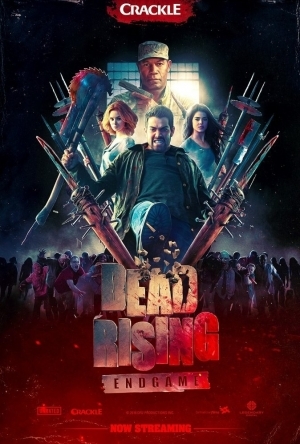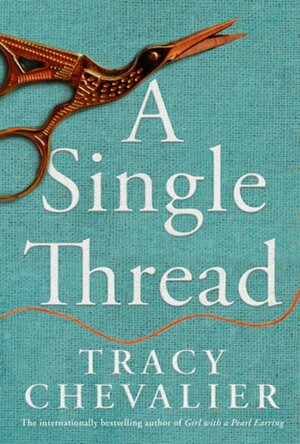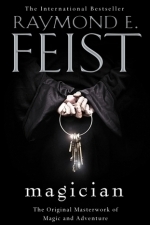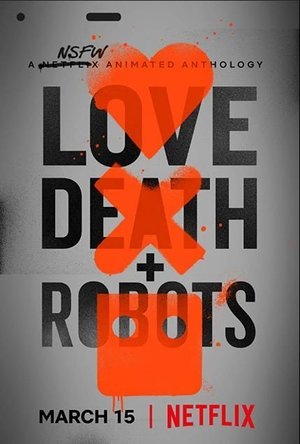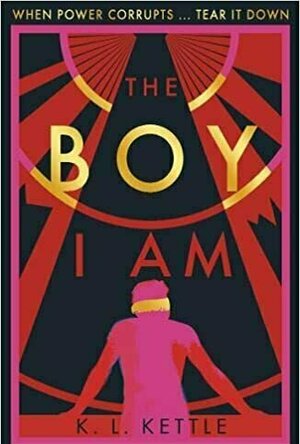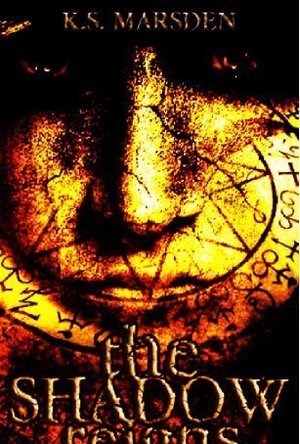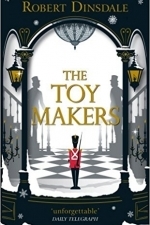Search
Search results
365Flicks (235 KP) rated Dead Rising: Endgame (2016) in Movies
Nov 20, 2019
There are a plethora of really shitty movies based on Games being released each year. None of them holding a candle to the source material it is based on. However each and every time I get suckered in because I want to be impressed by these attempts, as a movie fan and a gamer I need to be impressed. Lets be honest the premise of the Dead Rising games is just about absurd enough to work as a movie and with this being the second outing well have they learnt.
Based on the worldwide smash-hit video game series, Dead Rising: Endgame is the sequel to Dead Rising: Watchtower. Directed by Pat Williams (Continuum), written by Michael Ferris (Terminator Salvation) and Tim Carter (Mortal Kombat: Legacy) and starring Jesse Metcalfe, Marie Avgeropoulos and Dennis Haysbert.
Journalist Chase Carter Heads back into a quarantine zone to find the truth as to what happened to his partner. He and a small group of Journalists want to expose the creators of the outbreak. What he is going to find is a huge cover up that is going to threaten everything. General Lyons (Dennis Haysbert, President Palmer in 24 “Yaaaay”), is a Military officer who will never let anyone get in his way. Racing against the clock, Chase and crew must slice, hack and use any weapon at there disposal to find there way through the zombie hordes and out of the quarantine zone.
I really couldn’t figure out where I stood with this movie at first. I felt like I maybe should of been on the side of thinking it was hot trash. However the Dialogue all though Cheesy at times suits the world its in. The acting although not exactly Andrew Lincoln levels is pretty damn good for this type of flick. Budget and effects wise I had no complaints you could see they hadn’t cheaped out on the practical or the FX on the Zombies they were genuinely scary and brought a certain amount of originality.
I would recommend you see this movie. Go into expecting a fun action packed romp of a movie. Brad Pitts World War Z this movie is not, Zack Snyder’s Dawn of the Dead Remake this movie also is not, but the best thing is that it knows its not those movies, it knows its a Dead Rising tie-in and it brings all of that together in this glorious fun time at the movies. Who knew Jesse Metcalfe was a total Bad Ass????
Based on the worldwide smash-hit video game series, Dead Rising: Endgame is the sequel to Dead Rising: Watchtower. Directed by Pat Williams (Continuum), written by Michael Ferris (Terminator Salvation) and Tim Carter (Mortal Kombat: Legacy) and starring Jesse Metcalfe, Marie Avgeropoulos and Dennis Haysbert.
Journalist Chase Carter Heads back into a quarantine zone to find the truth as to what happened to his partner. He and a small group of Journalists want to expose the creators of the outbreak. What he is going to find is a huge cover up that is going to threaten everything. General Lyons (Dennis Haysbert, President Palmer in 24 “Yaaaay”), is a Military officer who will never let anyone get in his way. Racing against the clock, Chase and crew must slice, hack and use any weapon at there disposal to find there way through the zombie hordes and out of the quarantine zone.
I really couldn’t figure out where I stood with this movie at first. I felt like I maybe should of been on the side of thinking it was hot trash. However the Dialogue all though Cheesy at times suits the world its in. The acting although not exactly Andrew Lincoln levels is pretty damn good for this type of flick. Budget and effects wise I had no complaints you could see they hadn’t cheaped out on the practical or the FX on the Zombies they were genuinely scary and brought a certain amount of originality.
I would recommend you see this movie. Go into expecting a fun action packed romp of a movie. Brad Pitts World War Z this movie is not, Zack Snyder’s Dawn of the Dead Remake this movie also is not, but the best thing is that it knows its not those movies, it knows its a Dead Rising tie-in and it brings all of that together in this glorious fun time at the movies. Who knew Jesse Metcalfe was a total Bad Ass????
Emma @ The Movies (1786 KP) rated The Angry Birds Movie 2 (2019) in Movies
Jun 20, 2020
The first Angry Birds movie is one of my favourites, it's light-hearted fun that I can just put on if I need some distraction, so I was just a little excited for this coming out.
The fight against the pigs is much more of a game than an all-out war these days. Red is living the life of a hero, but he worries that one day the inhabitants of the island won't need him.
Over on Piggy Island their attention is drawn to an uncharted part of the world when a large ice ball falls from the sky. Leonard raises the white flag to ask Red to join him in defending their island against this new frosty neighbour.
Red is very relatable in this one and it's nice that he's come on a bit since the first film. They've given him a lot of anxiety that the audience will be able to identify with, and he definitely holds my same views on speed dating.
Hatchlings have always been the cutest things in Angry Birds and these three are a brilliant part of this one. Their reactions to everything that happens with the eggs is hilarious. There's one troubling incident with a snake that makes them less cute... but the less said about that the better. [Although it's in the trailer above if you want to see it.]
I have to say that out of the new characters I found it very difficult to recognise them. Everyone did a great job though and the new faces were always what they needed to be. There was just one confusing thing for me, Leslie Jones and Tiffany Haddish. I think they're both great actresses and I particularly like Haddish's voice work, but... I feel like they were cast in the wrong roles. I don't know why I think that, perhaps because I associate Haddish with larger than life bossy characters? I'm genuinely not sure.
It's a fun addition to the universe but I don't think it was better than the first. It was nice seeing the birds and pigs working together in a sort of Mission: Impossible/James Bond style infiltration piece but I wasn't excited about the story that gets them there. This mystery island that no one knows about has appeared like a bonus level in a game but you've skipped the intro. We're left with lots of questions but not enough fun to cover them up. I can't say I was happy about the ending either, there was a very quick resolution to it. It was still untaxing entertainment though and sometimes that's just what you need.
Side note: Something you'll notice is that there's a lot of music to recognise, some real bangers, but when they keep coming it begins to get rather tiring. I attempted to make a list but it became such an effort that I gave up.
Originally posted on: https://emmaatthemovies.blogspot.com/2019/08/the-angry-birds-movie-2-movie-review.html
The fight against the pigs is much more of a game than an all-out war these days. Red is living the life of a hero, but he worries that one day the inhabitants of the island won't need him.
Over on Piggy Island their attention is drawn to an uncharted part of the world when a large ice ball falls from the sky. Leonard raises the white flag to ask Red to join him in defending their island against this new frosty neighbour.
Red is very relatable in this one and it's nice that he's come on a bit since the first film. They've given him a lot of anxiety that the audience will be able to identify with, and he definitely holds my same views on speed dating.
Hatchlings have always been the cutest things in Angry Birds and these three are a brilliant part of this one. Their reactions to everything that happens with the eggs is hilarious. There's one troubling incident with a snake that makes them less cute... but the less said about that the better. [Although it's in the trailer above if you want to see it.]
I have to say that out of the new characters I found it very difficult to recognise them. Everyone did a great job though and the new faces were always what they needed to be. There was just one confusing thing for me, Leslie Jones and Tiffany Haddish. I think they're both great actresses and I particularly like Haddish's voice work, but... I feel like they were cast in the wrong roles. I don't know why I think that, perhaps because I associate Haddish with larger than life bossy characters? I'm genuinely not sure.
It's a fun addition to the universe but I don't think it was better than the first. It was nice seeing the birds and pigs working together in a sort of Mission: Impossible/James Bond style infiltration piece but I wasn't excited about the story that gets them there. This mystery island that no one knows about has appeared like a bonus level in a game but you've skipped the intro. We're left with lots of questions but not enough fun to cover them up. I can't say I was happy about the ending either, there was a very quick resolution to it. It was still untaxing entertainment though and sometimes that's just what you need.
Side note: Something you'll notice is that there's a lot of music to recognise, some real bangers, but when they keep coming it begins to get rather tiring. I attempted to make a list but it became such an effort that I gave up.
Originally posted on: https://emmaatthemovies.blogspot.com/2019/08/the-angry-birds-movie-2-movie-review.html
ClareR (6037 KP) rated A Single Thread in Books
Sep 12, 2019
A wonderful book!
A Single Thread is set in the period after World War 1, just before Hitler takes power in Germany. Violet Speedwell is a ‘surplus woman’, and so she is expected to live out her life caring for her ageing, cantankerous mother, and throwing herself on the mercy of her brother as she ages. However, Violet isn’t prepared to live her life like this. She manages to get a transfer from her job in Southampton to their Winchester offices. Life isn’t easy for Violet, and she lives off sandwiches and tea in her rented room. By chance, she finds herself in Winchester Cathedral on the day of the Society of Broderers service, where the embroidered kneelers and cushions are blessed and placed in the cathedral for the public to use. Violet finds herself drawn to the embroidery, and even though she has no experience, she becomes involved in the group.
I loved the descriptions of the embroidery: the different stitches, the colours, the camaraderie and friendships that Violet makes with Gilda and Miss Pesel (who incidentally, really existed - and what a life SHE had!). Who knew that embroidery and campanology (bell-ringing) could be so interesting?! Violet becomes very interested in bell-ringing - whether that’s because of the actual bell-ringing, or the fatherly Arthur who she falls in love with, I’m not quite sure.
I thought the social attitudes of the time were really well portrayed. ‘Spare women’ weren’t regarded very favourably, but this was something completely out of their control: so many young men had been killed during the war, that there just weren’t enough men to go round. And when some women found love with one another, they were ostracised and ridiculed. It’s good to see that we have moved on in some ways.
Anyway, I loved this book. It’s not just about embroidery and campanology, and I think that any reader will be pleasantly surprised at how interesting Tracy Chevalier makes these things! It’s a social commentary, a love story, a story about friendship and passion: of the man/ woman, woman/ woman and hobbies varieties. And I wouldn’t hesitate to recommend it.
I loved the descriptions of the embroidery: the different stitches, the colours, the camaraderie and friendships that Violet makes with Gilda and Miss Pesel (who incidentally, really existed - and what a life SHE had!). Who knew that embroidery and campanology (bell-ringing) could be so interesting?! Violet becomes very interested in bell-ringing - whether that’s because of the actual bell-ringing, or the fatherly Arthur who she falls in love with, I’m not quite sure.
I thought the social attitudes of the time were really well portrayed. ‘Spare women’ weren’t regarded very favourably, but this was something completely out of their control: so many young men had been killed during the war, that there just weren’t enough men to go round. And when some women found love with one another, they were ostracised and ridiculed. It’s good to see that we have moved on in some ways.
Anyway, I loved this book. It’s not just about embroidery and campanology, and I think that any reader will be pleasantly surprised at how interesting Tracy Chevalier makes these things! It’s a social commentary, a love story, a story about friendship and passion: of the man/ woman, woman/ woman and hobbies varieties. And I wouldn’t hesitate to recommend it.
The first novel (later broken into 2 parts?) in Raymond e feist's so-called Riftwar saga; this definitely falls under what I term as epic fantasy as it spans more than a decade, and all the political and personal changes that occur during that time of war, complete with ye olde 'person of unknown origin finding their place in the world'.
You know, the way a lot of fatnsy stories do? Think Luke Skywalker, from the back-planet of Tattoine, or Frodo Baggins from Bagend, to name but two.
Rags to riches, basically.
Anyway, perhaps the key protagonist of this is the keep boy Pug, who, over the course of the story - finds himself a native of two worlds - that's where the 'Rift' from Riftwar comes in, as a magical rift in space connects them - during a time of war between those two planes.
He's not the only protagonist; just the main one - there's also his childhood friend Tomas, the princes Arutha and Lyam, the princess Carline, the magician Kulgan - but Pug is, to my mind, the key character, with most of those other characters introduced through their relationship to him.
Others have commented on the writing style employed by Feist - it may seem 'basic', however that in itself is no bad thing (and, remember, this book is now decades old) as Feist gives you just enough information to envisage your own world. A bit more, perhaps, than the thumbnail sketches of Terry Pratchett (incidentally, one of my favourite authors), but nowhere near the level of detail that JRR Tolkien that could make The Lord of The Rings, well, a bit of a slog at times!
You know, the way a lot of fatnsy stories do? Think Luke Skywalker, from the back-planet of Tattoine, or Frodo Baggins from Bagend, to name but two.
Rags to riches, basically.
Anyway, perhaps the key protagonist of this is the keep boy Pug, who, over the course of the story - finds himself a native of two worlds - that's where the 'Rift' from Riftwar comes in, as a magical rift in space connects them - during a time of war between those two planes.
He's not the only protagonist; just the main one - there's also his childhood friend Tomas, the princes Arutha and Lyam, the princess Carline, the magician Kulgan - but Pug is, to my mind, the key character, with most of those other characters introduced through their relationship to him.
Others have commented on the writing style employed by Feist - it may seem 'basic', however that in itself is no bad thing (and, remember, this book is now decades old) as Feist gives you just enough information to envisage your own world. A bit more, perhaps, than the thumbnail sketches of Terry Pratchett (incidentally, one of my favourite authors), but nowhere near the level of detail that JRR Tolkien that could make The Lord of The Rings, well, a bit of a slog at times!
Charlie Cobra Reviews (1840 KP) rated Love, Death & Robots in TV
Jul 7, 2020
Unique And Visceral Experience
Love, Death, & Robots is an adult animated anthology tv series on Netflix. The series is produced by Joshua Donen, David Fincher, Jennifer Miller, and Tim Miller. Each of the 18 episodes released on the first season was animated by different crews from a range of countries. It's also a re-imagining of 1981 animated sci-fi film Heavy Metal. Starring Mary Elizabeth Winstead, Topher Grace, Gary Cole, Samira Wiley, and Stefan Kapicic.
Produced by different casts and crews, and consisting of 18 stand-alone episodes, each under 20 minutes, the title of the series refers to the recurring themes of love, death, and robots in each episode. Full of terrifying creatures, wicked surprises and dark comedy, it's a collection of animated short stories spanning several genres like horror, comedy, fantasy, and science fiction. Captivating stories come to life with world-class animation in a plethora of tales unlike anything else.
This series was wicked awesome. Reminded me of some of the other animated anthologies I've seen such as The Animatrix and Batman: Gotham Knight, except quite a bit more NSFW. This series also gave me a Twilight Zone vibe but bit darker. More blood and guts and highly sexual. Even though it's pretty graphic, I really liked a lot of the stories they told and the twists that most had in the end as well. Some are kind of hit or miss or just better than others but I think that there is definitely something for everyone despite the gore and nudity and language. I especially enjoyed the following episodes, 1. Sonnie's Edge, 8. Good Hunting, 10. Shape-Shifters, 13. Lucky 13, and 18. Secret War. The way they went about the story telling and world building in each episode was phenomenal. I really feel that some of these episodes deserve their own individual films or series to do them better justice. I mean some were just so good and less than 20 minutes felt like not enough or that they could have been even better. I give the entire series overall a 9/10.
Produced by different casts and crews, and consisting of 18 stand-alone episodes, each under 20 minutes, the title of the series refers to the recurring themes of love, death, and robots in each episode. Full of terrifying creatures, wicked surprises and dark comedy, it's a collection of animated short stories spanning several genres like horror, comedy, fantasy, and science fiction. Captivating stories come to life with world-class animation in a plethora of tales unlike anything else.
This series was wicked awesome. Reminded me of some of the other animated anthologies I've seen such as The Animatrix and Batman: Gotham Knight, except quite a bit more NSFW. This series also gave me a Twilight Zone vibe but bit darker. More blood and guts and highly sexual. Even though it's pretty graphic, I really liked a lot of the stories they told and the twists that most had in the end as well. Some are kind of hit or miss or just better than others but I think that there is definitely something for everyone despite the gore and nudity and language. I especially enjoyed the following episodes, 1. Sonnie's Edge, 8. Good Hunting, 10. Shape-Shifters, 13. Lucky 13, and 18. Secret War. The way they went about the story telling and world building in each episode was phenomenal. I really feel that some of these episodes deserve their own individual films or series to do them better justice. I mean some were just so good and less than 20 minutes felt like not enough or that they could have been even better. I give the entire series overall a 9/10.
Hazel (1853 KP) rated The Boy I Am in Books
Dec 22, 2020
Imagine a world where women are safe from men. Imagine a world where women are in charge. Imagine a world where men no longer reduce women to something to flirt with or dismiss as beneath them. This is the way of life in K. L. Kettle's dystopian novel The Boy I Am. War has left the Earth in ruins, and it is no longer safe to go outside, yet humanity is surviving in tall, secure tower blocks overseen by the Chancellor. Men and boys are confined to the basement floors as a punishment for their behaviour during the war. To earn their right to live on the upper floors, they must learn to behave like a gentleman, and never look at a woman's skin without their permission.
The protagonist, Jude, is running out of time to earn the right to live amongst the women. If he does not gain a sponsor, he faces a future in the dangerous mines. Yet, Jude is not sure he wants to live with the women, who have demeaned him for his gender since his birth. He has seen another side to them and believes the Chancellor has killed his best friend. Jude wants to escape, risk the poisonous fog outside and search for a better life. To do this, the Chancellor must die.
The way women treat men and boys is uncomfortable to read. Female readers, in particular, may have experienced similar treatment at the hands of men. Feminists desire an equal world, but there is the risk of going too far the other way. Yet, as Jude discovers, it is not as black and white as Female versus Male. An underground gang of women known as Hysterics are also trying to escape. They want to save themselves and the boys from a society not run by women, but by the elite.
K. L. Kettle explains her intentions behind the novel in a letter to the reader at the end of the book. She quotes Lord Acton's (1834-1902) proverb "absolute power corrupts absolutely" and questions if everyone is equal, does everyone have the ability to abuse the power they have? What may have seemed a good idea for humanity after the war, has become an oppressive state where no one is safe from those in power, not even the women. The Chancellor controls everyone, but Jude and the Hysterics are determined to take that power away from her.
Telling the story from Jude's perspective highlights the faults in today's societies. Many are unaware of the belittling behaviour happening around them, but when the roles are reversed, they are obvious. The Boy I Am is both thrilling and eye-opening, challenging gender roles and power dynamics in general. Those who have read books such as Noughts and Crosses by Malorie Blackman are guaranteed to enjoy K. L. Kettle's novel.
The protagonist, Jude, is running out of time to earn the right to live amongst the women. If he does not gain a sponsor, he faces a future in the dangerous mines. Yet, Jude is not sure he wants to live with the women, who have demeaned him for his gender since his birth. He has seen another side to them and believes the Chancellor has killed his best friend. Jude wants to escape, risk the poisonous fog outside and search for a better life. To do this, the Chancellor must die.
The way women treat men and boys is uncomfortable to read. Female readers, in particular, may have experienced similar treatment at the hands of men. Feminists desire an equal world, but there is the risk of going too far the other way. Yet, as Jude discovers, it is not as black and white as Female versus Male. An underground gang of women known as Hysterics are also trying to escape. They want to save themselves and the boys from a society not run by women, but by the elite.
K. L. Kettle explains her intentions behind the novel in a letter to the reader at the end of the book. She quotes Lord Acton's (1834-1902) proverb "absolute power corrupts absolutely" and questions if everyone is equal, does everyone have the ability to abuse the power they have? What may have seemed a good idea for humanity after the war, has become an oppressive state where no one is safe from those in power, not even the women. The Chancellor controls everyone, but Jude and the Hysterics are determined to take that power away from her.
Telling the story from Jude's perspective highlights the faults in today's societies. Many are unaware of the belittling behaviour happening around them, but when the roles are reversed, they are obvious. The Boy I Am is both thrilling and eye-opening, challenging gender roles and power dynamics in general. Those who have read books such as Noughts and Crosses by Malorie Blackman are guaranteed to enjoy K. L. Kettle's novel.
Billie Wichkan (118 KP) rated The Shadow Reigns (Witch-Hunter, #2) in Books
May 22, 2019
The second part of the Witch-Hunter series.
The world has been thrown into darkness by the Shadow Witch's revolution. The witch-hunters are scattered, but still strong. The race is now on to gather allies and win the war.
New enemies will arise; loyalties will be pushed to the limit. And an important question will be answered: can a witch-hunter that practices magic ever be trusted, or will he be persecuted?
It is said that 'love conquers all', but this twisted love must stay secret, locked away with the past.
The Shadow Reigns is the sequel to book 1 The Shadow Rises in K.S. Marsdens the witch hunter trilogy.
In the second instalment of the Witch-Hunter trilogy we find the world dealing with the catastrophic aftermath of the witches revolution. The remaining witch-hunters and the army form an alliance to plot the downfall of the powerful Shadow Witch and her followers.
I really like what the author has done with the plot twists in this one.
Hunter is embracing his newly realized anti-magic abilities. Hunter and his companions are searching for MMC survivors.
I found this one witty but also gritty.
The characters are so engaging and can just picture them in my mind.
The story and plot so well done and kept me on the edge of my seat!
Loved also the descriptive imagery of the landscape and also the magic.
Such a wonderful book.
Highly recommend reading!
I received a free copy of this book via Booksprout and am voluntarily leaving a review.
The world has been thrown into darkness by the Shadow Witch's revolution. The witch-hunters are scattered, but still strong. The race is now on to gather allies and win the war.
New enemies will arise; loyalties will be pushed to the limit. And an important question will be answered: can a witch-hunter that practices magic ever be trusted, or will he be persecuted?
It is said that 'love conquers all', but this twisted love must stay secret, locked away with the past.
The Shadow Reigns is the sequel to book 1 The Shadow Rises in K.S. Marsdens the witch hunter trilogy.
In the second instalment of the Witch-Hunter trilogy we find the world dealing with the catastrophic aftermath of the witches revolution. The remaining witch-hunters and the army form an alliance to plot the downfall of the powerful Shadow Witch and her followers.
I really like what the author has done with the plot twists in this one.
Hunter is embracing his newly realized anti-magic abilities. Hunter and his companions are searching for MMC survivors.
I found this one witty but also gritty.
The characters are so engaging and can just picture them in my mind.
The story and plot so well done and kept me on the edge of my seat!
Loved also the descriptive imagery of the landscape and also the magic.
Such a wonderful book.
Highly recommend reading!
I received a free copy of this book via Booksprout and am voluntarily leaving a review.
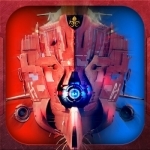
Ark of War
Games and Entertainment
App
- Enter your country's guild and vie with players from all over the globe to become the ruler of the...
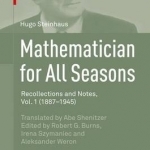
Mathematician for All Seasons: Recollections and Notes, (1887-1945): 2015: Volume 1
Hugo Steinhaus, Robert G. Burns, Aleksander Weron and Irena Szymaniec
Book
This book presents, in his own words, the life of Hugo Steinhaus (1887-1972), noted Polish...
Naomi Forrest (42 KP) rated The Toy Makers in Books
Jan 2, 2019
The first thing on the very first page that I loved was the narrator setting the scene and talking directly to you:
‘See the woman with the cage of pipe-cleaner birds, the vagrant soldier marvelling at the stuffed dogs lounging in their baskets? Keep a careful eye on them; you will see them again’.
I knew just from this descriptive ‘setting the scene’ chapter this book was going to be amazing, there was so much magic encapsulated in those first five pages. Papa Jack’s Emporium is the most wonderful shop you could imagine, a labyrinth of joy, surprises around every aisle and so much more. If you have ever seen the toy shop on Home Alone 2 that looked so amazing as a child, it has nothing on this! I was pretty sure for at least half of the book that Papa Jack was indeed Father Christmas.
After the initial chapter, the reader is introduced to Cathy, a fifteen year old who, shamefully (the year is 1906), is unmarried and pregnant. Plans are made for her to go to a special home where she will give birth and her child will be adopted. However, Cathy spots an advert looking for staff for the Emporium and runs away and so, the magic begins! The reader is catapulted into the world of the emporium and soon meets Papa Jack’s sons, Emil and Kaspar, who assist their father in the running of the store and the making of the toys, which are so much more than toys as we know them. People flock from far and wide to the emporium for it’s sublime creations and the memories and pleasures that they evoke.
The first half of the novel was like a fairytale, building beautifully to a gorgeous climax, full of wonder, friendship and subtle romance (perfectly done, so as not to detract from more pressing themes). In my head, toy soldiers and paper trees were everywhere and the wendy house is the stuff that dreams are made of. I loved observing (as I stood in the corner of the emporium, I’m sure, so convincing is Dinsdale) the relationships the built between Cathy and Emil and Cathy and Kaspar, though at times I felt sorry for Emil, never quite catching up to Kaspar as he wishes. If only the story had ended at page 187. And yet, that would not have been satisfying, not enough, so really, I’m glad it didn’t.
The second part of the novel, that is where Dinsdale really takes us on a journey. A couple of darker themes are touched upon in part one, where we learn of Jekab’s history (Papa Jack) but it ramps up in the second part, which ties in with World War I and beyond. You would think going from such wonderment and happiness to a bleak world of misery and reality would make you want to stop reading but I could not put this book down. I read 3/4 of it in one go! It is in the second part that Dinsdale brings in themes of shell shock, betrayal, sibling jealousy, bitterness and true, deep, familial love. Without spoilers, some characters truly lose everything and I cried during and after the book as it moved me so greatly (I mean, I am a crier anyway but not usually with books!). The entire novel is shaped around the ‘war’ between the brothers with some shocking twists along the way. Though part two draws in more realities, more brutalities and some heartbreaking moments, magic still punctuates and carries the reader through to the end. The ending is bitter sweet and my emotions were cloudy here, anger, joy, sadness and warmth all merging into a big teary mess.
I won’t say too much about specifics because some kinds of magic need to be discovered for yourself. The most beautiful sentiment in this novel though is that toys can’t save a life but they can save a soul, because toys transport many of us back to times of happiness, of wonder and of innocence, when things were simpler and problems remedied more easily. Times change but the joy of toys doesn’t. I can recall going through toy exhibits at both the castle museum in York and a toy museum in Edinburgh and it was so thrilling not only to see toys from my childhood but toys from before. Toys have the power to make magic we never knew existed, even if it is only in our head. The Toy Makers has yielded many comparisons with Erin Morgensten’s The Night Circus but for me, this novel surpassed anything I have read before in a similar vein. I have truly been blown away into a world that I honestly believe I will carry with me forever more. If, like me, you are a Harry Potter fan, you will know what I mean when I say that this book matches up to that first trip to Diagon Alley, to Hogwarts and to Honeydukes or that journey up Enid Blyton’s faraway tree as a child but it is even more exciting as an adult. It isn’t only the description that is first rate though; Dinsdale’s narrative style and use of language pulls you in and flows so smoothly, you are carried away from the first page whether you are prepared for it or not. Some reviews have said it is too fantastical but I cannot rate this book highly enough. It isn’t always easy reading – prepare to have your heart broken in several places- but go in looking for magic. You won’t be disappointed!
‘See the woman with the cage of pipe-cleaner birds, the vagrant soldier marvelling at the stuffed dogs lounging in their baskets? Keep a careful eye on them; you will see them again’.
I knew just from this descriptive ‘setting the scene’ chapter this book was going to be amazing, there was so much magic encapsulated in those first five pages. Papa Jack’s Emporium is the most wonderful shop you could imagine, a labyrinth of joy, surprises around every aisle and so much more. If you have ever seen the toy shop on Home Alone 2 that looked so amazing as a child, it has nothing on this! I was pretty sure for at least half of the book that Papa Jack was indeed Father Christmas.
After the initial chapter, the reader is introduced to Cathy, a fifteen year old who, shamefully (the year is 1906), is unmarried and pregnant. Plans are made for her to go to a special home where she will give birth and her child will be adopted. However, Cathy spots an advert looking for staff for the Emporium and runs away and so, the magic begins! The reader is catapulted into the world of the emporium and soon meets Papa Jack’s sons, Emil and Kaspar, who assist their father in the running of the store and the making of the toys, which are so much more than toys as we know them. People flock from far and wide to the emporium for it’s sublime creations and the memories and pleasures that they evoke.
The first half of the novel was like a fairytale, building beautifully to a gorgeous climax, full of wonder, friendship and subtle romance (perfectly done, so as not to detract from more pressing themes). In my head, toy soldiers and paper trees were everywhere and the wendy house is the stuff that dreams are made of. I loved observing (as I stood in the corner of the emporium, I’m sure, so convincing is Dinsdale) the relationships the built between Cathy and Emil and Cathy and Kaspar, though at times I felt sorry for Emil, never quite catching up to Kaspar as he wishes. If only the story had ended at page 187. And yet, that would not have been satisfying, not enough, so really, I’m glad it didn’t.
The second part of the novel, that is where Dinsdale really takes us on a journey. A couple of darker themes are touched upon in part one, where we learn of Jekab’s history (Papa Jack) but it ramps up in the second part, which ties in with World War I and beyond. You would think going from such wonderment and happiness to a bleak world of misery and reality would make you want to stop reading but I could not put this book down. I read 3/4 of it in one go! It is in the second part that Dinsdale brings in themes of shell shock, betrayal, sibling jealousy, bitterness and true, deep, familial love. Without spoilers, some characters truly lose everything and I cried during and after the book as it moved me so greatly (I mean, I am a crier anyway but not usually with books!). The entire novel is shaped around the ‘war’ between the brothers with some shocking twists along the way. Though part two draws in more realities, more brutalities and some heartbreaking moments, magic still punctuates and carries the reader through to the end. The ending is bitter sweet and my emotions were cloudy here, anger, joy, sadness and warmth all merging into a big teary mess.
I won’t say too much about specifics because some kinds of magic need to be discovered for yourself. The most beautiful sentiment in this novel though is that toys can’t save a life but they can save a soul, because toys transport many of us back to times of happiness, of wonder and of innocence, when things were simpler and problems remedied more easily. Times change but the joy of toys doesn’t. I can recall going through toy exhibits at both the castle museum in York and a toy museum in Edinburgh and it was so thrilling not only to see toys from my childhood but toys from before. Toys have the power to make magic we never knew existed, even if it is only in our head. The Toy Makers has yielded many comparisons with Erin Morgensten’s The Night Circus but for me, this novel surpassed anything I have read before in a similar vein. I have truly been blown away into a world that I honestly believe I will carry with me forever more. If, like me, you are a Harry Potter fan, you will know what I mean when I say that this book matches up to that first trip to Diagon Alley, to Hogwarts and to Honeydukes or that journey up Enid Blyton’s faraway tree as a child but it is even more exciting as an adult. It isn’t only the description that is first rate though; Dinsdale’s narrative style and use of language pulls you in and flows so smoothly, you are carried away from the first page whether you are prepared for it or not. Some reviews have said it is too fantastical but I cannot rate this book highly enough. It isn’t always easy reading – prepare to have your heart broken in several places- but go in looking for magic. You won’t be disappointed!
